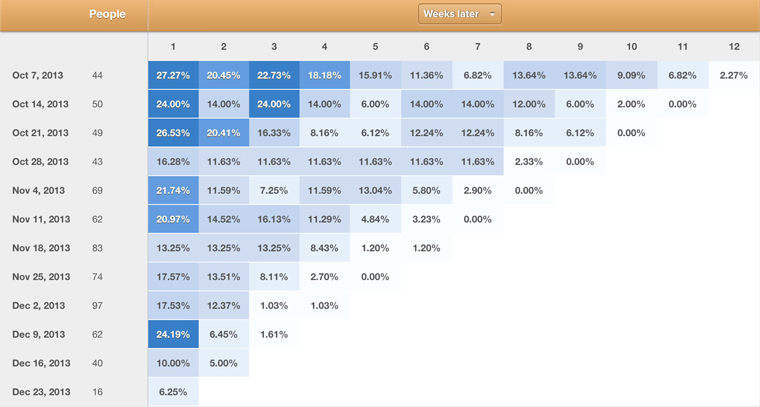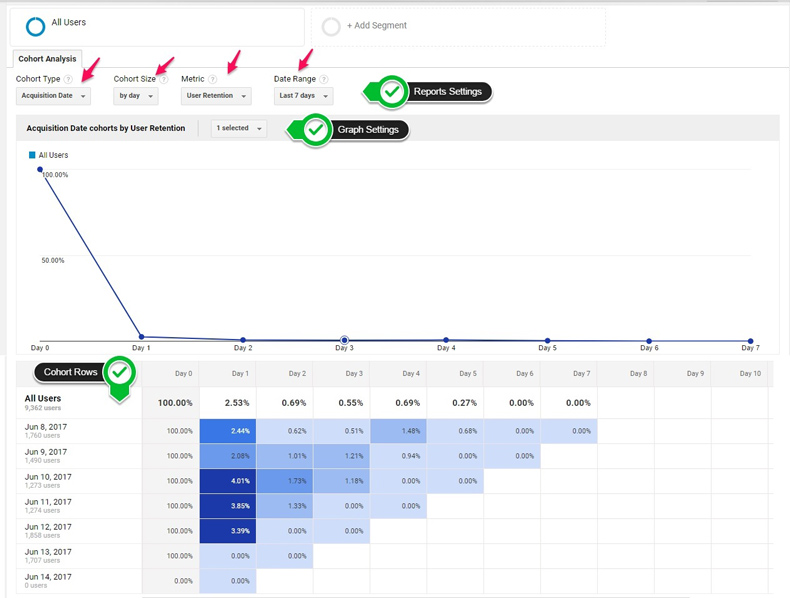- Custom Filter
- Custom Metric
- Event Tracking
- Custom Dimension
The correct answer: Custom Dimension
Here’s a Google Analytics practice question along with its answer. To succeed in the Google Analytics certification exam, you should be able to handle similar questions. Even though the question on this topic has been answered, you might still want an explanation. Check out the article below for a detailed breakdown of the question and its answer.
Explained:
Which Report Compares Metrics by User Acquisition Date Across Weeks?
Rewrite this sentence and make it simple “Through Cohort analysis, you can understand the behavior of different component user groups apart from the user population. Examples of how cohort analysis can be used include how you can see the individual user’s behavior and performance. However, I would like to know more about cohort and cohort analysis. In that case, you need to follow the sections below.
What are Cohorts?

A cohort is when we group people based on the date they first appeared on a website. For instance, if someone visits a website on April 25, they’re in the April 25 cohort, the April month cohort, and the fourth week of the April cohort. This means they’re in different groups for April. A fellow begins when the website first gets a visitor. But, for May, you won’t join that month’s cohort.
What Is Cohort Analysis?

Cohort analysis helps marketers and businesses study how customers behave in different groups. It looks at how people’s behaviors change over time.
For example, if a marketer emails 100 people, only a few might buy on the first day. Then, a few more might buy on the second and third days. But, when the same email goes out to another 100 people weeks later, some might buy on the first day. Cohort analysis lets you study these groups based on when they were acquired and how they behave.
This analysis also shows how their opinions and behaviors change over time. You can learn exciting things, like how the first email might lead to better conversions. Plus, those who buy in the second week might stick around longer.
Cohort analysis gives insights into important metrics like retention, engagement, acquisition, response to trends, and marketing impact.
What Is Cohort Analysis Good For?

Cohort analysis significantly impacts customer engagement, retention, and other essential areas. This technique also has a strong influence on your digital marketing efforts.
Both physical stores and websites undergo changes, which can happen more often if you’re doing things well. Such changes also influence how users act on your website. Using cohort analysis, you can see how these website changes affect users.
I’ve listed various factors here that can alter user behavior on your website:
- – Who you’re targeting
- – The channels you use
- – The ads you show
- – When you redesign your website
- – Any experiments or campaigns you run
- – Introducing new services or products
- – Running sales, promotions, and discounts
Limitations Of Google Analytics Cohort Analysis

Cohort analysis might seem helpful in theory, but it has its limitations. Google Analytics has some constraints when it comes to cohort analysis. Here are a few rules you should know about:
1. While you can group cohorts by audience characteristics, Google Analytics only lets you create cohorts based on acquisition dates.
2. Google Analytics does offer a way to track returning users and their retention. However, there are cases where this tracking falls short:
– When users clear their browser cookies
– When users visit the site in incognito mode
– When users use a different device or browser
3. Lastly, there can be complications from other factors that affect your data. We talked about this earlier. To better understand how metrics change with different marketing activities, it can be helpful to overlay your cohort data with a marketing calendar.
Bottom Line
Until recently, it was hard to do cohort analysis on Google Analytics. You had to set a special date for when users joined. Using this method, the correct answer to the question is ‘custom dimension.’ This article was useful. If you have more questions, please ask in the comments.
